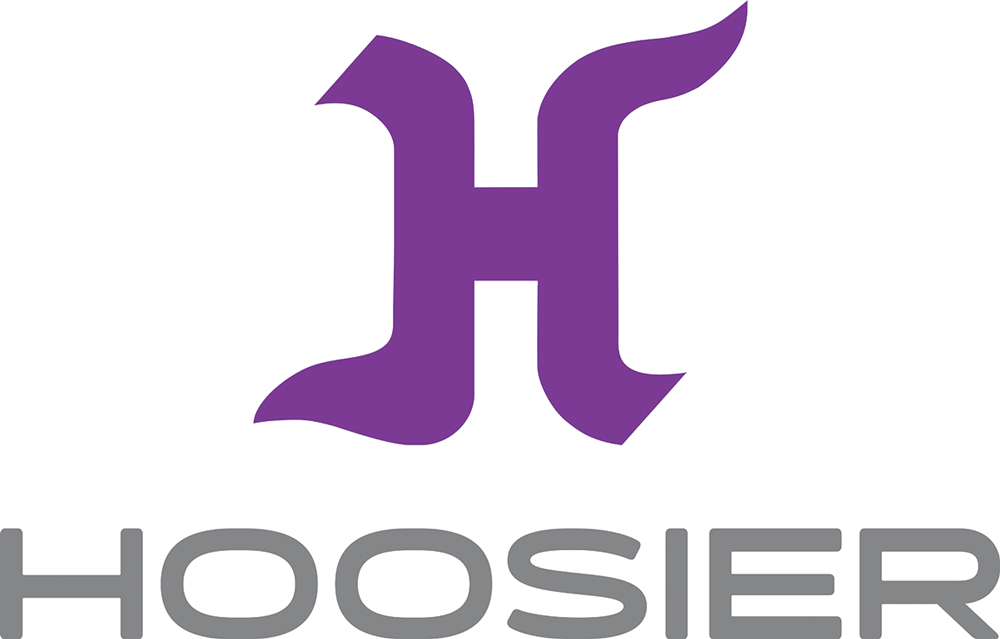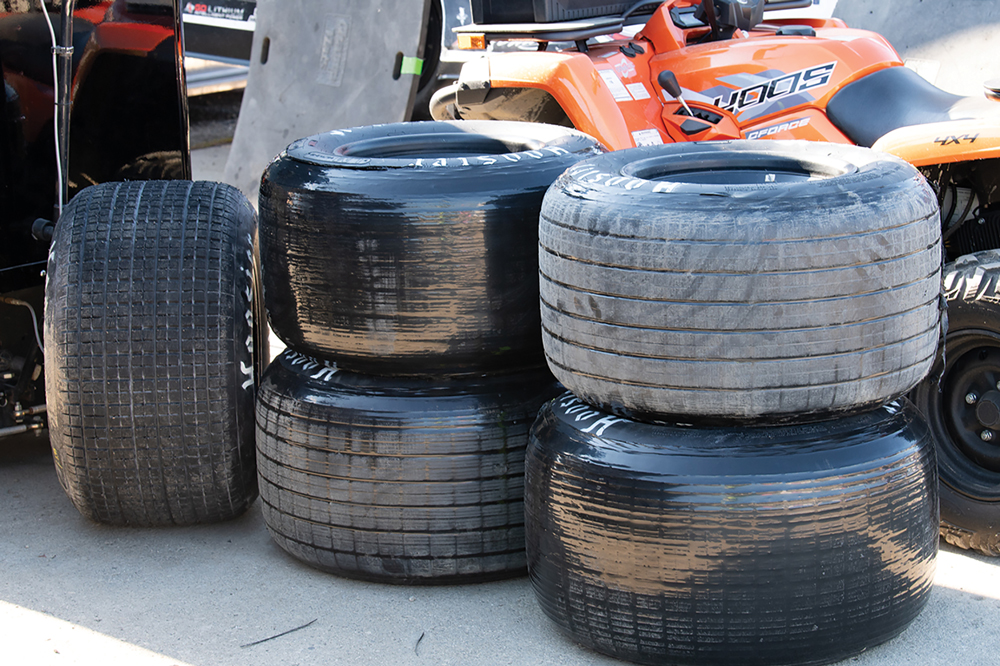Member Check-In: Hoosier Racing Tire

Hoosier Racing Tire President and CEO Joerg Burfien
This iconic brand that dates back to the 1950s plans to expand its footprint in motorsports, both domestically and abroad.
The official company logo is still the immortal stylized “H,” printed in purple, the color borrowed from founder Bob Newton’s race car when he established Hoosier Racing Tire in 1957. While the neo-gothic purple H remains intact, Hoosier has otherwise retooled its corporate branding for easier recognition and has recently rejoined PRI as a Founding Member.
The Hoosier brand is one of the most iconic in North American motorsports. For countless race fans, it evokes an image of a non-wing sprint car firing a barrage of clods at the wall of some loose-dirt Indiana bullring. Even though German tire giant Continental AG took ownership of Hoosier Racing Tire in 2016, much of the Hoosier production takes place at an expanded manufacturing facility in Plymouth, Indiana, where tires for oval competition, both on dirt and asphalt, are the firm’s enduring core products.
But that base is steadily broadening. With global reach in the tire market amassed during its 150-year history, Continental’s overarching endeavor is presenting Hoosier purple to the wider world, both for competition and street applications, and not always originating from the tire’s namesake home. Issue one, however, remains stabilizing tire supplies, as tracks, teams, and organizers continue dealing with pandemic-related shortages.
“The supply chain, at least to our knowledge, is pretty drained on every level,” Hoosier Racing Tire President and CEO Joerg Burfien explained to PRI in January 2022. “It’s at our warehouse, at the distributor level, the dealer level, and even the race teams themselves have been hoarding tires. This fact will force us to produce at a higher level just to fill back what was consumed last year.

“On top of that, we’re still seeing a very high demand,” Burfien said. “Compared to 2019, which was the last normal year for us, we’re still experiencing shortages. Everybody believes it will blow over and we will manage—and here, we have managed—but we’ve also told people to change tire rules, run tires longer. By the time summer is here, we should be able to make all these tires, even though we’re seeing demand way above our manufacturing capacity. We will have to cut some series short, and we’re actively communicating that.”
The first remedy Hoosier Racing Tire has pursued is simply keeping its customers apprised about the state of the competition tire market and how it’s likely to evolve. Part of the solution has involved streamlining Hoosier production in Plymouth to concentrate on core, demand-driven tire sizes and compounds. “We changed some tire specifications and eliminated some others to extend tire life,” Burfien said. “We’ve taken out some complexity through fewer tire choices, which should make the supply situation a little more relaxed, but I’m not sure how much further we can take it. Everybody thinks that on February 1, the situation will be back to normal, but it can’t be, because all the warehouses are still basically empty. We are shipping, though, and we’ve introduced a weekend shift now at Plymouth, and we expect we will have a record year of production in 2022, but we fear that it may not be enough.”
Burfien stressed that even before the pandemic, demand for Hoosier tires was on an upswing, a reality that exacerbated the shortages further. “Demand wasn’t as far down as we anticipated, about 10–15% below 2019 levels, and we were expecting to be down much more than that. People still have time and money. They build cars, and they want to race. That’s a good problem to have from a business standpoint, but not so good from the standpoint of customer satisfaction.”

Hoosier was steadily expanding its presence across a growing range of racing disciplines when Continental acquired the firm. Drag race, road course, pro street, and karting rubber occupy Hoosier’s product portfolio. In coming months, the breadth of Continental’s marketing and technological reach will open new markets for Hoosier that don’t necessarily wind their way through Indiana, Burfien predicted.
“We will never forget our heritage and core market; it’s by far our biggest segment, and we will continue to maintain and develop that,” he said. “We are looking closely at the ATV and UTV market, and with the help of our mother company, we are also looking seriously into the semi-street or dual-purpose tires, UTG 200 or even UTG 80 or 100 tires,” referring to the US-mandated Uniform Tire Quality Grade that measures tread wear. “We have just a joint product with Conti, the ExtremeContact Force, a UTG 200 racing tire, that was introduced last summer. It was developed by Hoosier, it’s sold by Hoosier, but it’s built by Conti in Germany.
“We’re looking to make the Hoosier brand available outside the US, because we were pretty much a nobody in Europe,” Burfien said. “We have a Hoosier sales team in Europe now. If we want to expand Hoosier into China, Conti already has thousands of people in Beijing and Shanghai. Our tractor pulling tires will be coming out of Malaysia now—they’re too big for us to make in Plymouth, so that’s something that we could have never looked at without the Conti footprint. We’re also looking at recreational vehicle and endurance tires, from Thailand or APAC, although Hoosier-branded race products will be out of Plymouth for the next couple of years, for sure.”
 MEMBERSHIP LOGIN
MEMBERSHIP LOGIN JOIN PRI
JOIN PRI


